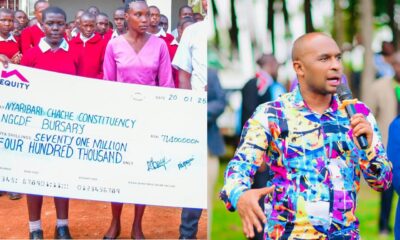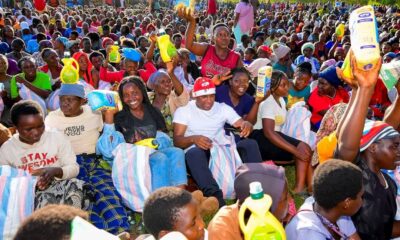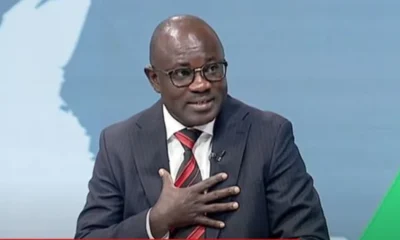The Digital Lenders Association of Kenya (DLAK) says Kenya has been at the forefront of the digital financial revolution and has set the pace for many other developed and developing countries worldwide on how to grow financial inclusion using mobile phones infrastructure.
DLAK says Kenyans should be proud to have one of the most developed mobile wallet ecosystems and a plethora of mobile financial services providers adding that the emergence and growth of digital lenders has accelerated this development by complementing the role of commercial banks.
It says a majority of the population previously not served by commercial banks are able to access short term credits to improve their livelihoods and make a significant contribution to the general economy.
“However these meaningful gains could be eroded if we put a blind face to the complementary role digital mobile lenders play and start seeing players as bad competitors. Sadly, the digital lending model has been widely criticised because most of us have not understood how lenders operate and the environment in which they operate. The fact is that digital lenders operate in a totally different environment compared to commercial banks making their models very independent and therefore pricing of their products cannot be compared.,” said DLAK spokesperson Kevin Mutiso.
Get breaking news on your Mobile as-it-happens. SMS ‘NEWS’ to 20153
The pricing of loans in digital micro-lending is structured in such a way that lenders can only recover all costs only after the 5th loan to the same customer. For a loan amount of Sh 2,500 for instance, a mobile lender will get revenue of Sh 375 but the cost of issuing that credit facility is very costly.
A micro-lender must factor in cost of marketing (Sh 200), Cost of funds (Sh 31), CRB Verification (Sh 250), Operation cost (Sh 150) while Supporting IT, M-PESA-bank account transaction cost and cost of risk will take up Sh 50, Sh 22 and Sh 500 respectively.
DLAK says all these expenses will leave a lender with a Sh 1,172 loss. To reverse this loss and make a profit, one customer must borrow at least five times.
Click here to see –> PROFIT INFOGRAPHICS
An average loan amount for a mobile lender is Sh 4,000 while that of a commercial bank is Sh 300,000. This openly shows the two are serving different customer levels that have unique attributes.
At a monthly interest of 15 per cent for a micro lender, the total cost of loan will be Sh 600. For a commercial bank, the total cost of loan over a period of 60 months will be Sh 210,000 with an interest rate of 14 per cent.
“This brief analysis is just one way of showing that mobile loans cannot just be compared with those offered over the bank counter. As a matter of fact, the two models have been structured to complement each other and when we learn to embrace their strategic roles the country can boost access to flexible and affordable financial services and products,” Mutiso added.
Another factor to consider according to the DLAK spokesperson is the fact that mobile lenders are meant to largely support small traders, start-ups and households on a short term basis while commercial bank loans are used to fund big ticket projects that are usually of long term in nature.
“To deeply understand digital lending, just think of other occasional services that you subscribe to like car-hailing or even a hotel stay. These are not services that you use every day but on demand. It is often rare to find people compare the price of a hotel room to a flat that is rented. You do not stay in hotel rooms every day for a year or forever because it is not an affordable option for many people. But even though hotel nights are more expensive than rental costs in a flat, people are comfortable with the arrangement because they have understood that you only need to stay in a hotel when you travel or in a business that demand you to book a hotel for a night or two. These are just but a few instances that will require one to subscribe to hotel room services. Most of us have smartphones with one or two cab-hailing apps like Uber, Little Cab or bolt installed. This is another way of understanding how micro-lenders operate. You don’t use these apps daily because you have a cheaper option of using public transport, but it is good to have them at your disposal to serve you when you need them. You will agree with me that it is difficult to find public transport vehicles at night especially when you have a medical emergency,” he explained.
Click here to see the –> MOBILE VS BANK LOANS INFOGRAPHICS
Mutiso says similarly there are times when digital loans come in handy like when in an emergency situation that requires you to sort out medical bills or housing bills like electricity and water especially when you have run out of cash.
Adding that digital loans therefore are occasional, convenient and available when you need them and should be embraced positively as catalysts to financial inclusivity.

 General News1 week ago
General News1 week ago
 General News5 days ago
General News5 days ago
 Politics5 days ago
Politics5 days ago
 General News3 days ago
General News3 days ago






